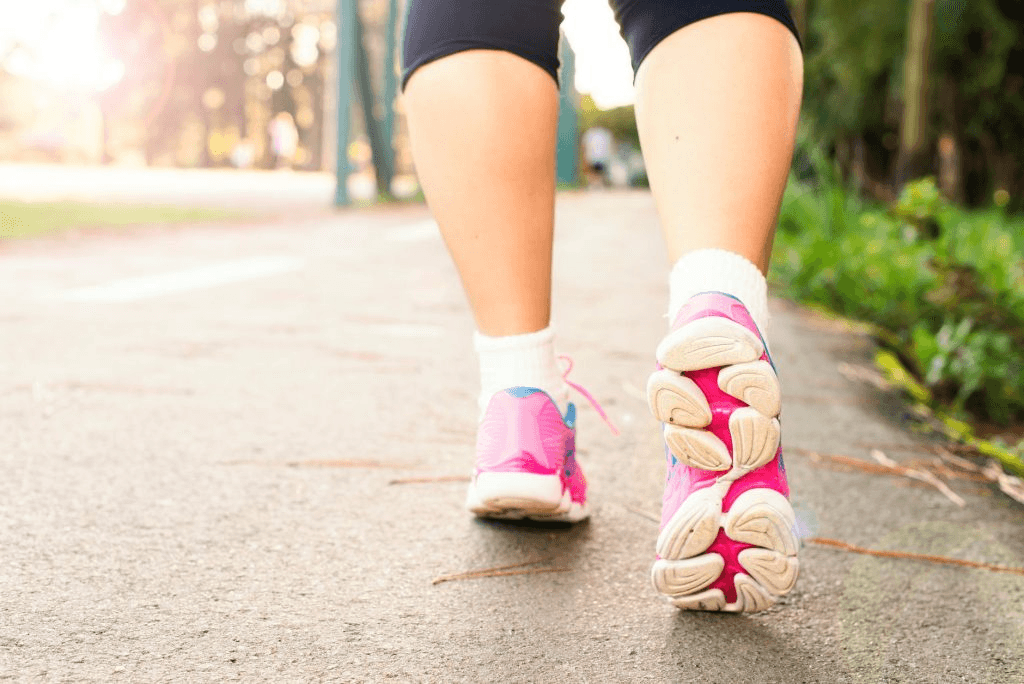Top 11 Best Step Tracker Apps and Devices To Try (2025)

We all understand the significance of physical activity at this point. Walking as a simple activity helps people achieve better cardiovascular health and improved mood, weight management, and increased energy levels. I have tracked my steps for several years, and I want to share my picks for the best tracking apps and devices that I believe will be the best in 2025.
A reliable step tracker, which exists as either a phone application or a wearable device, enables users to track their daily movements. The application lets users create targets that they can track their progress and stay motivated.
In this guide, I’ll walk you through what I believe are the best step tracker apps of 2025, the best step tracker apps for iPhone, and some great free options, too. We will also examine the functionality of these tools as well as their precision levels and primary benefits.
1. Scrambly
Scrambly recently added step-based earning features that fit neatly alongside its usual mix of online rewards. Users can connect their phone’s step counter or fitness tracker, and the app awards points for meeting daily step goals. Those points can then be redeemed for PayPal cash, gift cards, or in-app bonuses like game credits and survey boosts.
What makes Scrambly interesting is its versatility; walking is just one of several small tasks that earn rewards, so you can pair step tracking with offers, games, or short challenges for a more rounded experience.
It’s best seen as a “multi-reward” platform with a walking twist rather than a full-on fitness tracker. While payouts per step are small, the app’s casual design and easy integrations make it a light, fun way to turn motion into a few extra points over time.
2. Google Fit
Google Fit has evolved into a top health platform that delivers users a full range of detailed health data. The application was developed by Google to monitor daily step counts and movement duration, and heart rate points through its simple user interface.
Google Fit functions smoothly on Android devices and Wear OS wearables while it automatically syncs with third-party apps such as Strava and Lifesum, and MyFitnessPal. The dashboard also provides users with an easy way to see activity patterns and establish targets, and track their advancement throughout different periods.
The app also enables users to monitor their heart rate and workout activities, and walking paths through a smartwatch connection. Your health metrics remain organized in a single location because of the deep integration between the application and the Google ecosystem.
Android users can rely on Google Fit as their main free application for tracking their physical activities. The product serves as an excellent choice for users who are new to the product line and for those who use it frequently, because it has a simple design and provides standard health advantages.
3. Apple Fitness / Health App
The Health and Fitness apps from Apple operate as default applications on iPhone devices and Apple Watches while delivering advanced features. These applications track your daily activities by monitoring your steps and calories, and Activity Rings (Move, Exercise, Stand) to help you stay in a balanced daily routine.
You don’t need to set anything up; it quietly counts your steps in the background while you go about your day. Apple Fitness provides seamless integration with Strava and Nike Run Club fitness applications, and Fitness+ subscribers can access workout guidance that links directly to their activity records.
The Apple Watch enhances the overall experience when used in conjunction with the device. Your watch will automatically monitor your heart rate and track distance and route, and stair climb data.
Apple devices have a built-in tracking system that provides iPhone users with the best possible combination of privacy protection and user-friendly operation. The automatic synchronization between Apple devices allows users to keep their fitness targets active without needing to put in much work.
4. Strava
Strava is best known among runners and cyclists, but it’s equally fantastic for walkers and hikers. Users can use the app to turn their ordinary walking into measurable activities, which show maps and display their walking speed and elevation, and total walking duration.
Strava achieves its main benefit through its social features. The platform enables users to connect with friends while sharing their progress and giving virtual rewards to one another through its social network design.
The GPS function in Strava tracks your route and provides smooth integration with all available devices. The system keeps players engaged through its advanced analytics system and performance tracking features, and leaderboards, which help players improve their skills.
Strava motivates users who walk occasionally as well as data-focused individuals through its community features and analytical capabilities. The program is designed for individuals who wish to work out through team-based competitive group activities.
5. StepsApp
The application design of StepsApp presents a contemporary appearance. The circular design of progress rings and daily charts in your data provides an interactive visual experience. The app starts tracking your steps and distance and calories, and walking time as soon as you install it with no need for any setup.
StepsApp stands out because it offers users a perfect blend of easy-to-use features and advanced capabilities. The app connects to Apple Health for viewing extended patterns and wheelchair activity tracking through its accessible user interface, which stands out as one of the most accessible solutions available.
StepsApp provides users with two features that make the app both motivating and stylish through its dark mode and achievement milestone system. The product features a basic design that delivers important information to users who need it.
6. MapMyWalk by Under Armour
MapMyWalk serves users who dedicate themselves to walking activities for exercise or athletic training, or casual enjoyment. The app tracks routes and distance and pace, and elevation through GPS while it guides users in real-time during walking activities.
Users can set particular goals through the application, which tracks their calorie burn and delivers detailed statistics about their post-walk activities. The system works together with Under Armour smart shoes and wearable devices to deliver more precise tracking.
The application also allows users to track their walks while also enabling them to join walking challenges and community events, which create a social aspect. The application serves as a motivational tool for walkers and hikers who get precise tracking information.
7. Garmin Connect
The Garmin Connect system functions as an entire performance network that extends beyond basic fitness tracking capabilities. The app offers detailed tracking data when used with a Garmin watch or tracker because it monitors steps and intensity minutes and tracks sleep and heart rate.
Garmin Connect also provides visual dashboards that enable users to monitor trends and evaluate performance changes across different periods. It also enables users to access motivational tools, which include challenges and badges, and social communities.
Garmin delivers its most effective features to users who possess Garmin devices for obtaining complete performance data. The application gives you an extensive health tracking system, which enables users to track their health metrics and establish personal targets.
8. Samsung Health
The wellness features of Samsung Health extend past basic step tracking to provide users with a complete health management system. The app provides users with a full 360° health view by monitoring their heart rate and sleep patterns and stress levels and nutrition intake, and physical activity.
Samsung Health tracks steps with high precision through its connection to Samsung smartwatches. The app allows users to create individual goals while participating in monthly walking challenges and following pre-set workout programs.
For those in the Samsung ecosystem, this is the most comprehensive health tracker you can get. The platform combines attractive design aspects with dependable data and community-based features into one unified system.
9. Fitbit App + Devices
Fitbit stands as a leading brand that people trust for their step tracking needs. The application operates independently, but users can access additional data through Fitbit device pairing, which provides heart rate measurements and sleep quality analysis, and active zone minute tracking.
The Fitbit system has gained popularity through its user-friendly design and its reward system based on goal achievement and social competition features. Users can access Fitbit Premium to join group competitions and follow guided workouts, and discover personalized wellness information.
All Fitbit Inspire and Charge, and Versa models deliver the same level of performance and motivational features. Fitbit is an excellent choice for anyone who values reliability, design, and strong community support.
10. Huawei Health / Band 9
Huawei Health operates as a global fitness platform that draws most of its users from Asian and European regions. The app provides precise step tracking and heart rate monitoring, and sleep quality assessment when used with the Huawei Band 9.
Huawei also includes simple graphs and customizable exercise targets and step-by-step workout instructions. It’s light on battery use and compatible with both Android and iOS devices.
The practical choice for users who require an affordable, precise solution is Huawei Health. The program serves as an ideal entry point for wellness beginners who prefer to stay away from complicated methods.
11. Pacer (Pedometer & Step Tracker)
The community-based step tracker Pacer lets users turn walking challenges into interactive and enjoyable activities. The platform lets users create their own walking challenges and virtual races and participate in global walking events through a single interface.
Pacer tracks your daily movement through automatic recording of your steps and calories burned, and distance traveled. The app features a virtual adventure map, which enables players to discover locations across the globe as they advance through their real-world journey.
The Pacer also enables users to connect their fitness trackers and wearable devices to access their data in one place. The platform operates in multiple languages and allows users to make single payments, which makes it accessible to personal and business users.
Bonus Picks: Dedicated Step Tracker Devices
vívofit 4 — If you want something super simple, the vívofit 4 is a great pick. It runs for a whole year on one battery and never needs charging. The device requires only a simple strap-on attachment to start tracking your movements automatically.
Runmefit S5 Fitness Tracker — The Runmefit S5 is perfect if you want solid step tracking without breaking the bank. The app tracks your walking and running activities and workout sessions while providing mobile alerts. A great little starter tracker that does more than you’d expect.
LifeSource Digital Pedometer MYXL15 — Don’t like wearing gadgets on your wrist? This clip-on pedometer is your best bet. The device is small and precise while offering a simple operating system. You just have to clip it on and go about your day.
TANITA Pedometer Activity Meter AM-161 — This one’s old-school in the best way possible. The device operates as a wearable device that tracks your walking distance and calorie expenditure through simple display results that need no application setup or configuration. The system is suitable for users who want straightforward, dependable systems.
The devices serve as an option for users who want to monitor their activities by using physical hardware devices instead of mobile applications.
What Is a Step Tracker?
A step tracker (or pedometer) is a tool, usually in the form of an app or wearable, that records how many steps you take per day. Users can view additional metrics, which display distance traveled and calories burned, and active time.
The system enables users to track their movement activities for establishing daily step targets and monitoring their progress over time.
How Do Step Trackers Work?
Most step trackers rely on an accelerometer, a sensor that detects movement across three axes (x, y, z). The algorithms detect walking or running steps through the analysis of these motion patterns, which reveal repeated signals that correspond to these activities.
The advanced tracking technology includes a gyroscope for detecting rotation, GPS for determining routes and distances, and heart rate sensors to differentiate between walking and running and other physical activities.
Your wrist-based sensors in wearables track your movements even when your phone is not present. Data is then synced to your app for viewing trends. The detection capabilities of modern models have been enhanced through the implementation of AI and machine learning technology.
How Accurate Are Step Trackers?
Modern step trackers provide accurate measurements, but they produce some small measurement errors. The accuracy of the device depends on multiple elements, which include the device model and its placement between the wrist and pocket area and the speed at which the user walks, and the way their arm moves.
The measurement accuracy of this device falls within a range of ±5–10% under standard operating conditions. The key element consists of achieving consistent results instead of focusing on exact numerical goals. Your tracker provides excellent daily progress tracking as long as it maintains consistent measurement of your activities.
The consistency of wearables surpasses phone applications since your phone remains stationary, or you take it off your body.
Advantages of Using a Step Tracker
Motivation & Habit Building – Real-time tracking of your advancement proves to be an extremely effective motivational tool. Your daily step count increase drives you to stay active while you continue your regular physical activities. Daily walking becomes an automatically rewarding practice through regular performance of this activity.
Goal Setting & Accountability – Users can achieve their goals through step trackers, which provide them with progress tracking capabilities. Whether it’s 5,000 or 10,000 steps a day, you can see exactly how close you are to hitting your target. The immediate feedback system enables you to maintain concentration while making you accountable for your actions.
Health Insights – Most trackers track more than just steps because they also measure calories and distance, and active minutes. The tests reveal useful health patterns about your general state of wellness during periods of days or weeks. Your daily activities become visible to you as they impact your energy levels, your sleep patterns, and your emotional state.
Employee / Corporate Wellness – Workplaces use step trackers to establish positive work environments through motivational competition. Team members can achieve their wellness targets through step challenges, which promote physical group exercise to build stronger interpersonal bonds. It’s a fun, measurable way to keep everyone active and connected.
Low Barrier to Entry – Walking functions as a fundamental exercise for health preservation, and step trackers make it easier to track this activity. The system requires no special equipment or training because users can begin tracking their activity by simply wearing their device. Fitness exists as a practice that integrates seamlessly into any daily schedule.
FAQ Section
Q: How accurate are step trackers? A: They’re reasonably accurate but not perfect. Expect around ±5–10% error depending on conditions. The goal is consistent tracking, not perfection.
Q: Are step tracker apps free? A: Many are free or freemium. Basic step counting is usually free, while advanced features may require upgrades (e.g., Fitbit Premium, Strava subscription).
Q: Do I need a wearable, or can I use just my phone? A: You can absolutely use your phone — many apps support that. But wearables offer more consistent tracking and additional metrics like heart rate or sleep.
Q: What’s the best step tracker app for iPhone? A: The built-in Apple Health / Fitness is fantastic. Among third-party apps, StepsApp and Pacer are excellent iOS options.
Q: Can step trackers measure more than steps? A: Yes. Many track calories, distance, heart rate, sleep, and active minutes, depending on the device.
Q: Do I need to calibrate or adjust anything? A: Not usually. Most apps calibrate automatically, but ensure motion permissions are enabled and wear your device consistently for best results.





